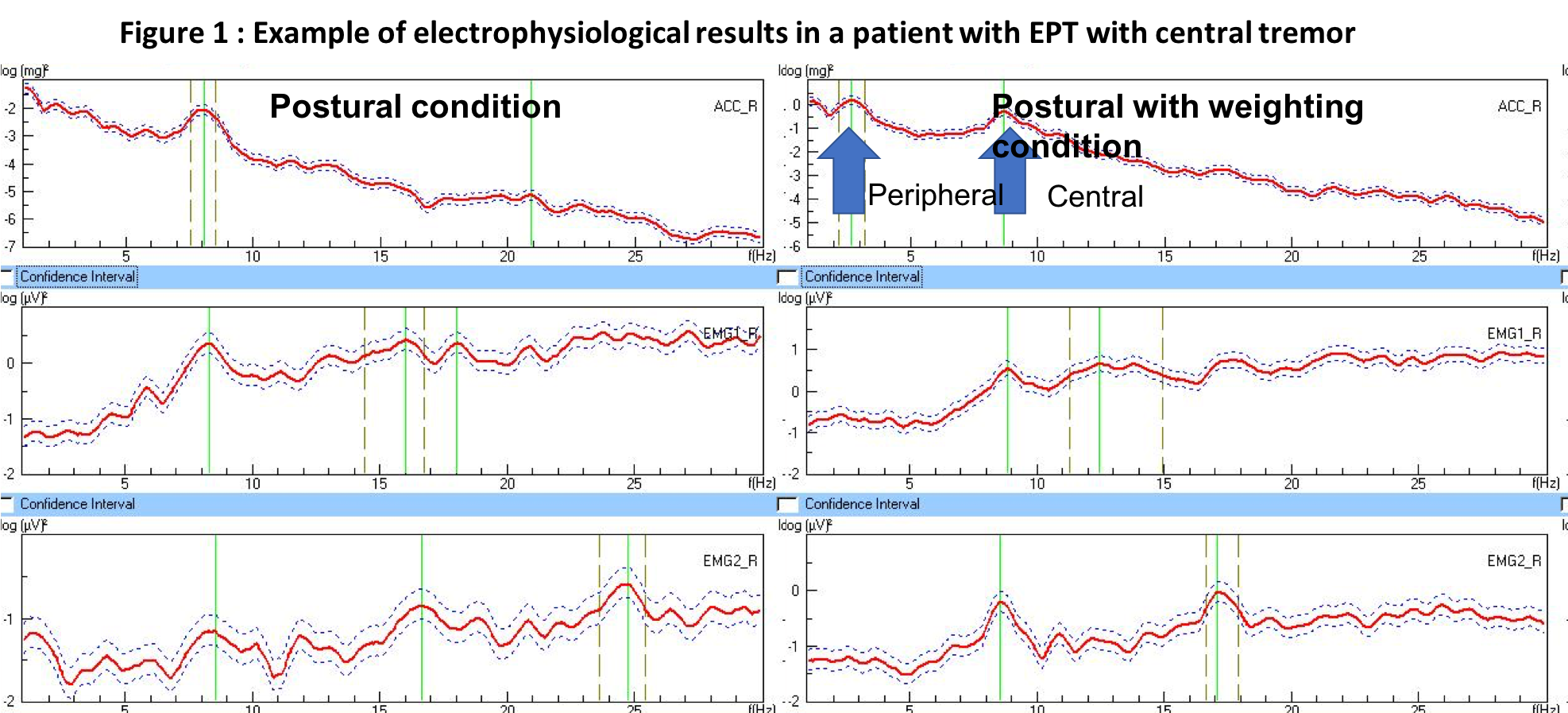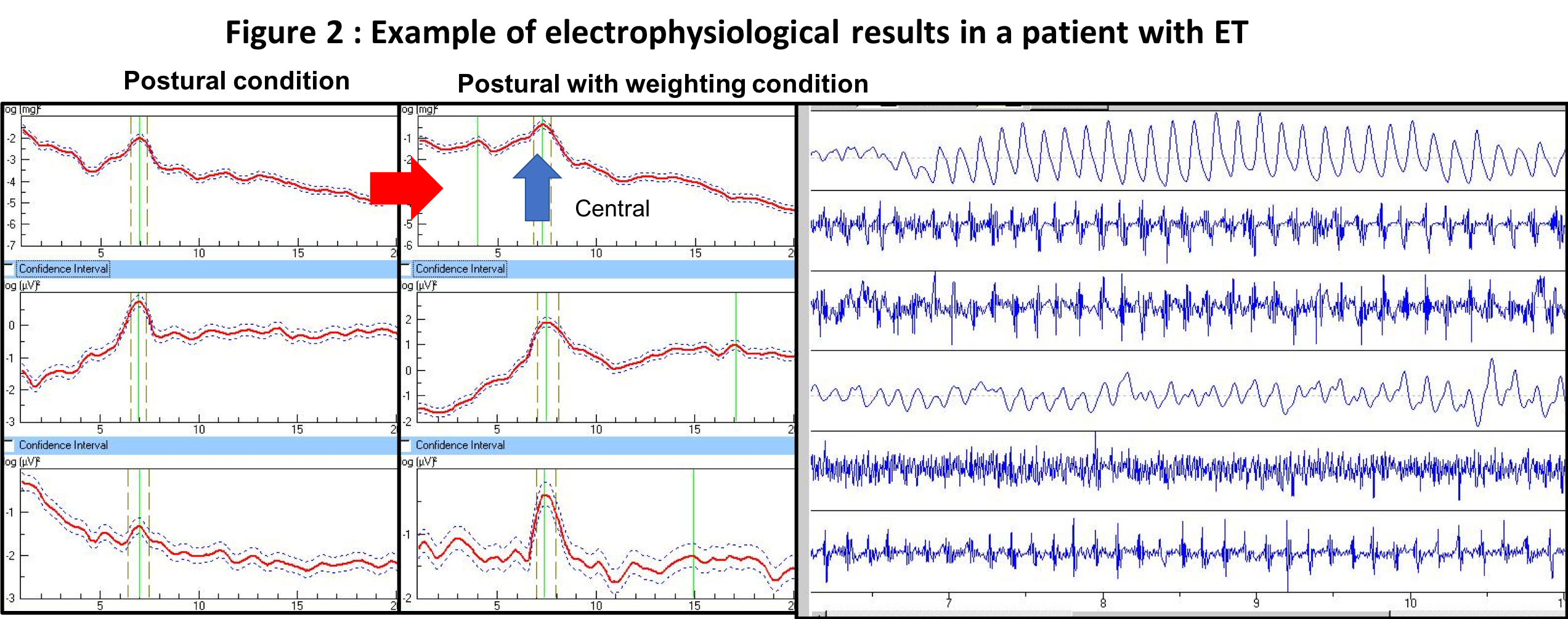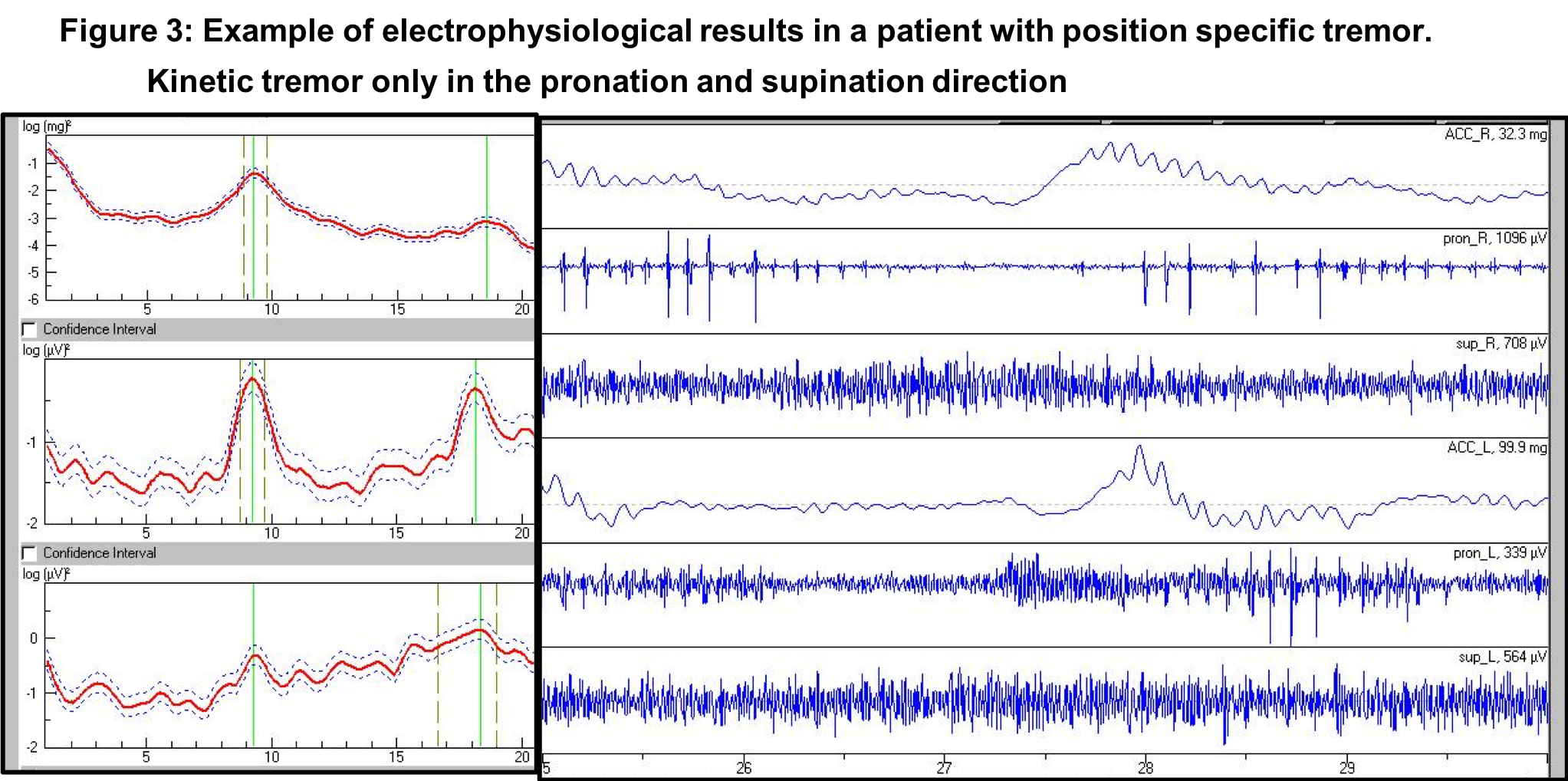Session Information
Date: Sunday, October 7, 2018
Session Title: Tremor
Session Time: 1:45pm-3:15pm
Location: Hall 3FG
Objective: To explore the diagnostic utility of neurophysiologic tests in young-onset patients who present primarily with upper limb action tremor.
Background: In young-onset patients, isolated postural or kinetic tremor syndrome of bilateral upper limb is clinically indistinguishable from mild essential tremor (ET) or enhanced physiologic tremor (EPT). The most recent IPMDS task force on tremor has recommended the use of electrophysiological tests to aid in the differential diagnosis of common tremor syndromes.(1,2) However, electrophysiological data on this patient subgroup is still limited.
Methods: Eight patients, aged between 18-40 years (32 8.4), with age of tremor onset of 15-39 years (25 9.5) were studied. Hand or finger tremors were measured with inertial sensors placed on the back of the hands or fingers and bilateral surface EMG applied bilaterally on the flexor and extensor muscles. Tremors were recorded during posture, posture with 1-kg or 0.25-kg weighting (if finger tremor was more visible) and kinetic action if present. Peak frequency of tremor (Hz) and magnitude (half-width power; V2) of the accelerometer signal and EMG were analyzed.
Results: Postural finger tremors were clinically more visible than hand tremors in 4 of 8 patients (50%). Electrophysiological tests showed a decrease in tremor frequency > 1 Hz with loading, consistent with EPT in 6 of 8 patients (75%). The peak postural tremor frequency of EPT was 8.5 (1.2) Hz.[table1] Interestingly, 3 of 6 patients in EPT group showed a central peak at 8-12 Hz. [figure1] EMG activities were demonstrated in 4 of 6 EPT patients with synchronous patterns. The etiologies of EPT were diverse including thyroid related, drug induced and anxiety. Only 1 patient’s results were consistent with ET criteria with a peak tremor frequency at 7 Hz.[figure2] The magnitude of tremor was higher in ET and kinetic tremor was detectable. Tremor in the last patient was observed only during kinetic actions involving at pronation and supination of the arm, consistent with a position specific tremor rather than ET or EPT.[figure3]
Conclusions: In our small case series, EPT is more common than ET in young-onset tremor patients. Our study also supports the use of electrophysiological tests in the differential diagnosis of these disorders that are clinically indistinguishable. Larger studies involving more patients are needed to confirm these findings.
References: 1. Gironell A, Kulisevsky J, Pascual-Sedano B, Barbanoj M. Routine neurophysiologic tremor analysis as a diagnostic tool for essential tremor: a prospective study. J Clin Neurophysiol. 2004;21(6):446-50. 2. van der Stouwe AM, Elting JW, van der Hoeven JH, van Laar T, Leenders KL, Maurits NM, et al. How typical are ‘typical’ tremor characteristics? Sensitivity and specificity of five tremor phenomena. Parkinsonism Relat Disord. 2016;30:23-8.
To cite this abstract in AMA style:
P. Panyakaew, R. Bhidayasiri. The utility of electrophysiological tests in the differentiation of upper limb tremor in young-onset patients [abstract]. Mov Disord. 2018; 33 (suppl 2). https://www.mdsabstracts.org/abstract/the-utility-of-electrophysiological-tests-in-the-differentiation-of-upper-limb-tremor-in-young-onset-patients/. Accessed April 26, 2025.« Back to 2018 International Congress
MDS Abstracts - https://www.mdsabstracts.org/abstract/the-utility-of-electrophysiological-tests-in-the-differentiation-of-upper-limb-tremor-in-young-onset-patients/




